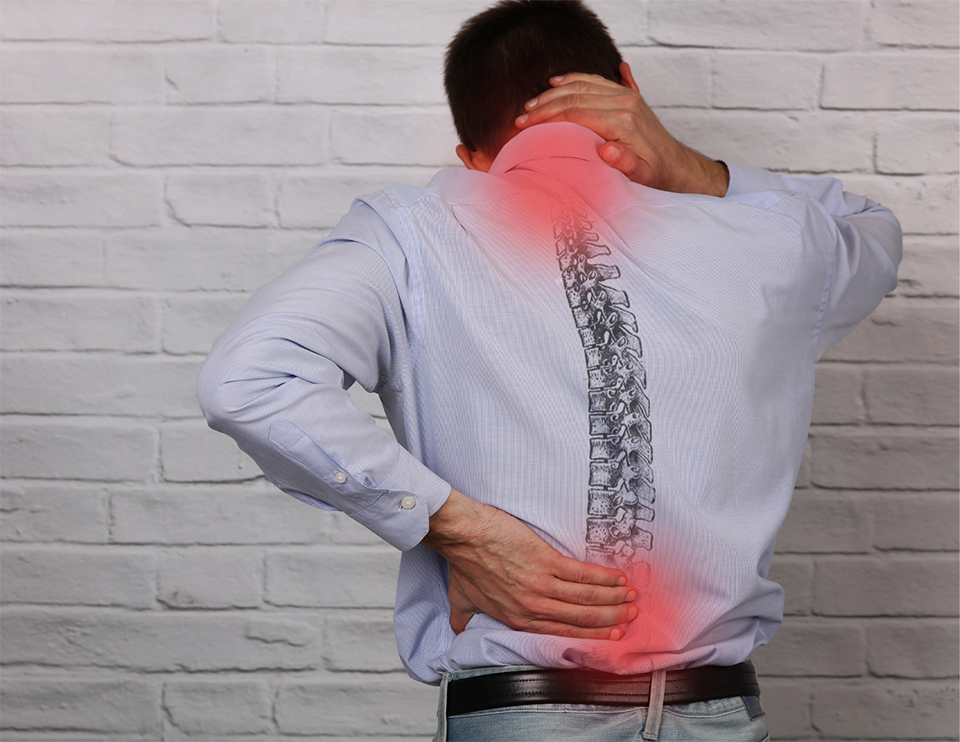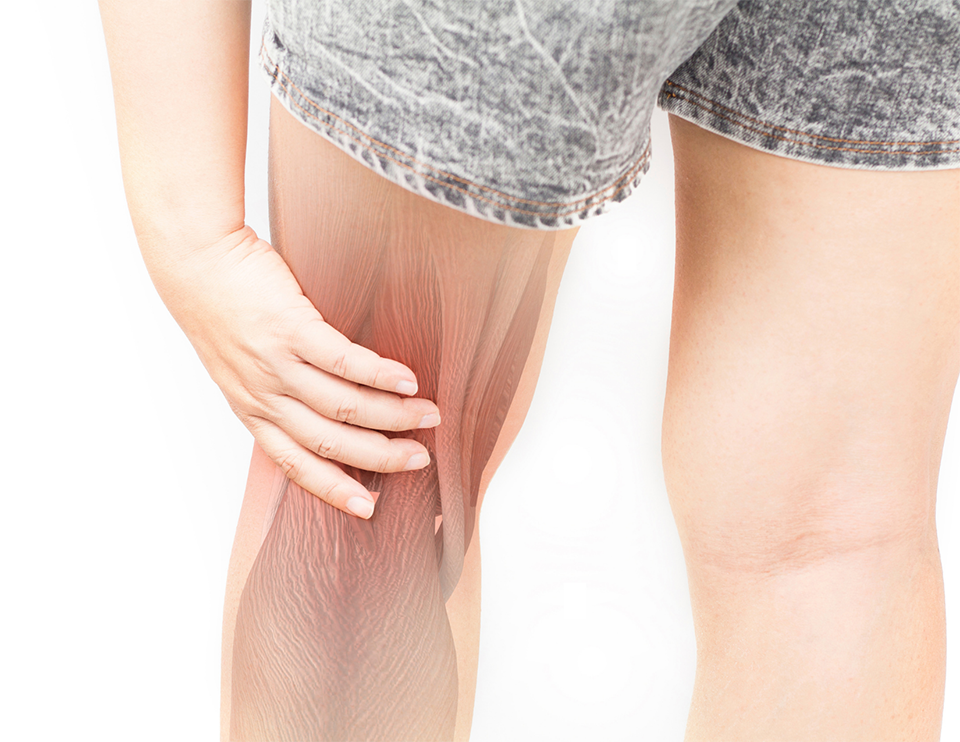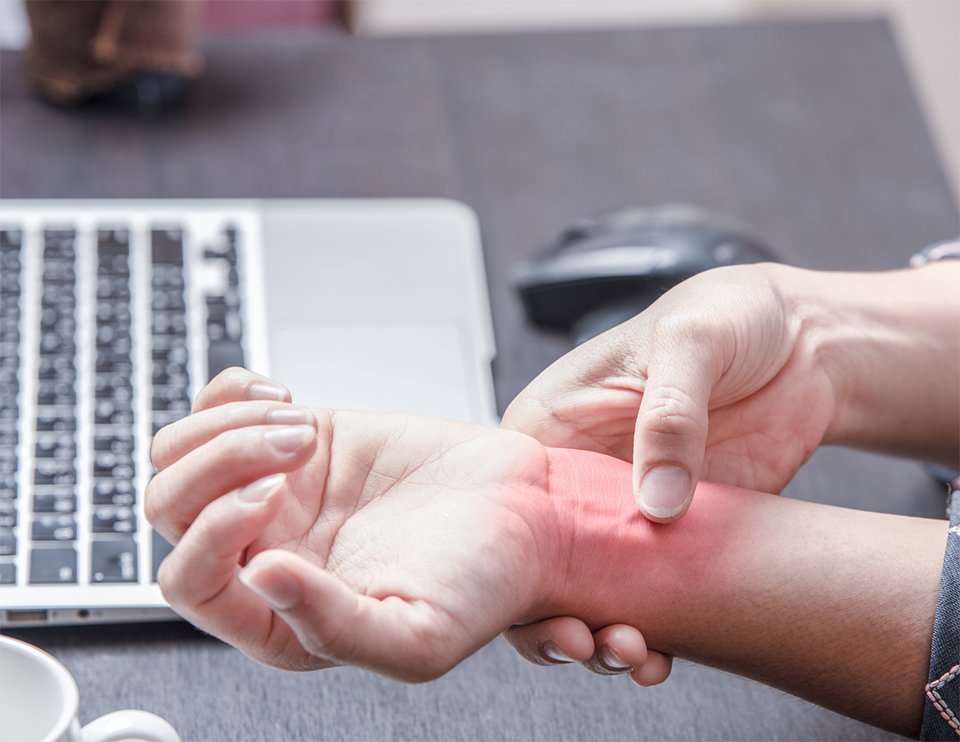Symptoms

Sports Injury
Chiropractic Care can be used for healing and preventing sports injuries. An athlete is put through rigorous training with constant repetitions, opening risk for slow wear and tear of the body over time or sudden unexpected injuries. Ensuring your body is aligned correctly will prevent damage. Athletes who receive chiropractic care tend to have increased flexibility, a wider range of joint motion, avoid injury and improved performance. Chiropractic care can help injuries by reducing swelling, soothing soreness and stiffness and reducing joint inflammation. Chiropractic care can offer relief for other sports-related injuries such as a pinched nerves and whiplash. Chiropractic care focuses on the whole body and treatment for injuries can help prevent injuries in other areas of your body.

Whiplash
Whiplash occurs when the neck is thrown forward and back in a fast, forceful motion. It is common in sports injuries, car crashes, and any other situation that causes sudden shifts on your spine and neck. Whiplash can cause patients to have inflammation and pain. Chiropractic care can help by stimulating injured neck and back muscles, increasing blood circulation, decreasing inflammation, and reducing muscle spasms, neck stiffness, and muscle tightness. Therapies such as spinal manipulation can reduce irritations to injured discs. Soft tissue therapies such as muscle stimulation and relaxation treatments loosen up muscles and ligaments, while ultrasound therapy and electrical stimulation help reduce inflammation.

Back and Neck Conditions
Back and neck pains are often due to spinal misalignment. Chiropractors use spinal manipulations and methodical repositioning of your head, shoulders, neck, back and hips to relieve pain. Chiropractors examine the entire spine and take note of restricted movement areas, understand the patients walk and posture before starting treatment. A Chiropractor may use spinal manipulation, manual therapy and other techniques as part of the treatment plan for pain. Chiropractors combine spinal manipulations with massages, hot and cold therapies, relaxation techniques, electrical stimulation, ultrasound therapies, specific exercises, and stretching to improve a patient’s overall health.

Leg Pain (Sciatica)
Sciatic pain originates from sciatic nerve compression. This nerve runs from the lower back through the leg(s), causing a patient to feel pain from their back in their leg(s). Nerve compression can exist due to a lumbar spine subluxation, herniated or bulging disc, spinal tumor, pregnancy, childbirth, diabetes and constipation. Piriformis Syndrome can also cause Sciatica. The piriformis muscle is in the lower spine and connects to the thighbone and is used while rotating the hip. This muscle can be injured by falling, having different leg lengths, arthritis, etc. The sciatic nerve is under this muscle; therefore, when cramping and spasms develop from injury, the sciatic nerve gets pinched, causing inflammation and pain. Chiropractors use alignment and massage therapy, heat and cold treatments, ultrasound therapy and spinal decompression, exercises, and lifestyle changes to reduce injury and pain.

Knee, Foot and Ankle Pain
Lower leg pain, such as knee, ankle, and foot pain, is usually caused by additional weight and pressure to one’s knee or lower leg. The body carries a lot of weight above the knee, causing inflammation and pain to one’s knee, ankle, and foot. Chiropractors treat lower leg pain by realigning joints to reduce restrictions on your body and decrease inflammation that affects mobility. Tenderness in one’s lower leg hinders our ability to walk and bear weight, increasing stiffness and swelling in the joints. Chiropractic adjustments and massage therapy are gentle, non-addictive, non-invasive treatments that reduce inflammation and relieve lower leg pain. A chiropractor can pinpoint the exact cause of one’s pain and create a custom treatment plan, resulting in reduced inflammation, greater flexibility, improved muscle tone and strength, and less pain. For particular lower leg diagnoses, a chiropractor may treat a patient with other doctors.

Shoulder/Elbow pain
Chiropractors treat shoulder and elbow problems with chiropractic adjustments to relieve pressure on the areas causing pain, reducing joint restrictions, and misalignment. A few of the shoulder and elbow pains chiropractors deal with are bursitis to the rotator cuff, tendonitis, frozen shoulder, tears, and dislocations. Chiropractic care can decrease swelling improve alignment, range of motion, flexibility, muscle tone, strength, mobility, and help heal shoulders and elbows. Chiropractors will also recommend stretches and other treatments such as icepack massages, stretches, and more.

Arm/Wrist Pain
Not all wrist pain can is fixable by adjusting the carpal tunnel bones. Chiropractors will check for misalignments along the vertebra in the neck and examine the range of motion and search for vertebrae affecting nerve root that could be sending pain to one’s arm and hand: testing bones, joints, and movement ability. A chiropractor may use manual adjustments if a bone or joint is misaligned. The doctor will perform wrist adjustments and recommendations for at-home exercises to help reduce swelling and improve one’s range of motion.

Migraine and Tension Headaches
Chiropractic care can decrease migraine and tension headaches. Utilizing spinal and neck adjustments help realign the spine and other joints, causing inflammation and blood flow restriction. Chiropractic adjustments can help headaches by decreasing inflammation, relieving stress and tension disorders, reducing pain and discomfort. Muscle tension in the neck is a frequent cause of headaches. This tension can be caused by one spending a long time in the same position creating tension in the neck, back, and scalp causing headaches. Chiropractors perform spinal manipulations, chiropractic adjustments, and advice on a diet, vitamin supplements, ergonomics, exercise, and relaxation techniques to relieve the stress in one’s body.

Carpal Tunnel Syndrome
Carpal tunnel syndrome is often caused by repetitive motions that put pressure on your arm’s nerve, inflicting numbness, and pain in your wrist, hand, and forearm. Chiropractors can frequently diagnose a pinched nerve somewhere between the wrist, neck, shoulder, or elbow. Chiropractic care for Carpal Tunnel syndrome involves chiropractic adjustments and extremity adjustments. Extremity adjustments help to ensure joints are in their right alignment. Adjusting the spine and joints can improve body function and often stops pinching the nerve causing pain. For example, pain in the arm can be caused by a pinched nerve in the upper spine and neck, and pain in the leg can exist due to a pinched nerve in the lower back.